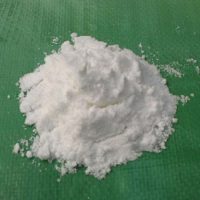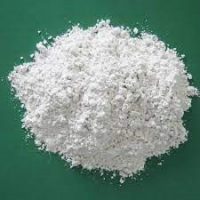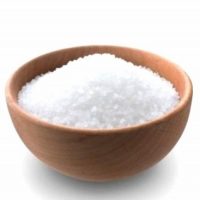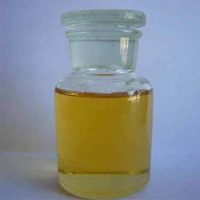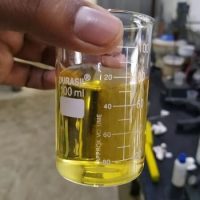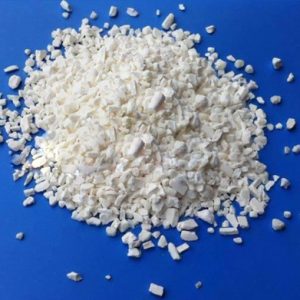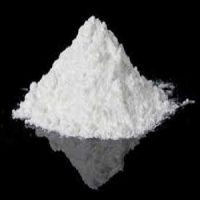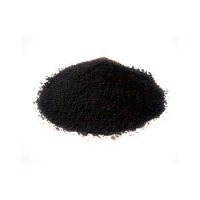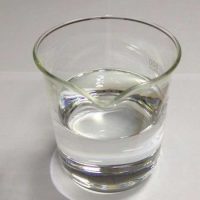Sodium Chlorite
- CAS Number: 7758-19-2
- Appearance: Solid
- Purity:%
- Made in: China
- Phone Num : +86-2150591759
- E-mail: info@shanghaimetex.com
- Description
Description
Sodium chlorite with the chemical formula NaClO2 is a commercial chemical compound that has a variety of industrial and cosmetic applications, but its main use is as a bleach or surface disinfectant. It is also used in industries such as water treatment and wastewater treatment agents, surface cleaning and disinfection, and the elimination of microbes in the production and processing of seafood. Higher concentrations of this chemical are used in industries such as paper and textiles to bleach and strip fabrics, pulp, and paper.

Physical and Chemical Properties:
Sodium Chlorite is a strong oxidizing compound that has a white solid appearance. This chemical is available in both dry and hydrated forms, usually, the hydrated type is more stable.
This strong oxidizing compound decomposes at a temperature of 200 ° C and has better solubility with temperature increases.
The most important physical and chemical properties of this compound can be summarized in the following table:
| Chemical formula | NaClO2 |
| Molecular Weight(g/mol) | 90.44 |
| Appearance | solid |
| odor | odorless |
| Density (g/cm3) | 2.468 |
| pH (100 g/l at 20 °C) | 10.0-11.0 |
| Melting point (° C) | 180-200 °C |
| Boiling point (°C) | 1461 |
| Water Solubility | Completely soluble |
| Other names | Chlorous acid, sodium salt |
| color | Colorless to white |
| form | crystals or powder |
| Chemical Structure Depiction |  |
Production Process of Sodium Chlorite:
Sodium chlorite is obtained indirectly from sodium chloride, NaClO3. To do this, sodium chlorate is first reduced to chlorine dioxide in a strongly acidic solution using reducing agents such as sodium sulfite, sulfur dioxide, or hydrochloric acid. This substance is then absorbed in an aqueous sodium hydroxide solution, where another reducing agent converts it to sodium chlorite. Hydrogen peroxide can even be used as a reducing agent, producing oxygen gas as a by-product instead of other inorganic salts or substances that can contaminate the product.
Applications and Uses of Sodium Chlorite:
- This chemical has many applications in the industry. In addition to industry, it can also be used in home applications.
- It is used for water treatment and chemical purification.
- This compound is used as a bleaching agent in the paper and electronics industries.
- When placed in an acidic solution, NaClO2 is converted to ClO2. When added to municipal water, ClO2 helps control the unwanted taste and smell of water. This substance usually removes ions such as iron and manganese.
- Sodium chlorite is used as a bleach in the textile industry for a variety of fibers from cotton to synthetic fibers such as nylon, perlone, deralon.
- Helps remove trihalomethanes from drinking water.
- sodium chlorite has various industrial applications such as controlling microbial contamination in industrial cooling systems and towers. Because this product is a strong oxidizer, it is commonly used in gas chimney scrubbers.

Food processing companies use it to wash fruits and vegetables because it is also a strong fungicide. It is also used to wash meat and poultry.
In addition to the industrial applications of this substance, the pharmaceutical grade of this substance is used in the treatment of diseases such as malaria, hepatitis, AIDS, osteoarthritis, colds, etc.
Safety Information:
Oral use of this chemical in low doses may not be dangerous for the body, but the exact effect of this substance on the health of the body requires further study and research. However, the use of this substance in high doses or for long periods of time can lead to complications such as diarrhea, nausea, insomnia, fatigue, increased saliva, hypotension, etc. In addition, this substance can lead to more serious problems such as nosebleeds, bronchitis, skin irritation, dry throat and cough, and shortness of breath.
This substance is used in high concentrations in the production of bleach and disinfectants. Exposure to the substance can lead to eye damage, acute respiratory problems, and chemical burns.
It can also ignite rapidly if sodium chloride comes in contact with combustible materials. However, sodium chloride alone does not burn normally.




First-aid measures:
Skin Contact: Immediately flush skin with water.
Inhalation: move the person to the fresh air.
Eye Contact: Rinse eyes with water for at least 15-20 minutes.
Ingestion: Do not induce vomiting. Get medical aid immediately. Call a poison control center.
Packing and Storage:
The material should be stored in a tightly closed container in a cool, dry, well-ventilated area. Keep the product separated from flammables, combustibles, acids, and organics.


